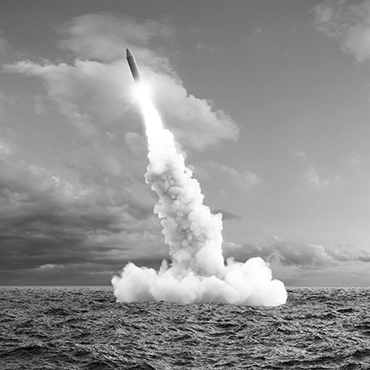NATURE'S SUPERFIBER
Spider-Man may be a comic book creation, but his web-slinging feats aren't all science fiction. In fact, real spider silk is one of the strongest, toughest materials found in nature. Researchers at Northwestern University have discovered why: when spiders stretch their silk during spinning, it reorganizes the proteins and boosts hydrogen bonding, making the fibers even stronger. Because lab-made spider silk is also biodegradable, this breakthrough could lead to new blast-resistant body armor and surgical materials that dissolve harmlessly inside the body. (Science Daily, March 7, 2025)
BEIJING PURSUES DEEP-SEA STRATEGY...
Chinese adventurism in the South and East China Seas has been well documented, but the PRC's naval activity is gaining new notoriety for purported oceanic mapping – activity that's expanding into new areas. China is rapidly mapping seabeds far from its shores, gathering oceanographic data with clear military value, like tracking and detecting submarines. Research ships like the Xiang Yang Hong 01 and Dong Fang Hong 3 have conducted sweeps in the Indian Ocean and Pacific near sensitive military sites. Beijing claims the surveys are for science and mining purposes, but analysts warn there's no firewall between civilian and military use. The research can be used to help China maintain competitive advantage over the rest of the world when it comes to critical minerals used for defense. (Wall Street Journal, March 12, 2025)
...AS DARPA RELEASES SEA DRONE
Air-based drones have revolutionized warfare, but their sea-based counterparts receive far less attention. Western militaries have employed maritime drones for cargo delivery (see Defense Technology Monitor no. 85) and mine and submarine tracking (see Defense Technology Monitor no. 66), but DARPA is now moving toward a fully combat-capable platform. In 2020, DARPA and the Navy launched the No Manning Required Ship (NOMARS) program to design an autonomous warship able to operate for extended missions without the weight, cost, and safety systems required for human crews. The result is the USX-1 Defiant — a 180-foot vessel capable of automatic at-sea refueling and engineered to operate with 90% reliability for a full year. (Techspot, March 5, 2025)
A SPACE METAL MILESTONE
While large-scale space industrialization may still seem far off, breakthroughs in 3D printing could significantly shorten the timeline. Specifically, the International Space Station has used polymer-based 3D printing for years, but the European Space Agency recently added a metal 3D printer to test manufacturing in microgravity. The ESA’s European Space Research and Technology Centre (ESTEC) in the Netherlands has now received the first metal component printed in space, which will be compared to Earth-printed counterparts. Metal printing in orbit is challenging due to the extreme temperatures required to melt alloys, but success could enable on-demand production of critical components — paving the way for advances in space-based solar power, communications infrastructure, and even pharmaceutical manufacturing. (3DPrinting Industry, March 14, 2025)
CHINA'S "KILL MESH" TIGHTENS
As U.S. adversaries, particularly Russia and China, rapidly advance their space capabilities, the U.S. Space Force must adapt. Vice Chief of Space Operations Gen. Michael Guetlein said the service is "pivoting from... providing the most exquisite space services on the planet to... a warfighting force capable of protecting and defending our capabilities in and through space." Guetlein cited emerging adversary orbital warfare tactics, including satellite "dogfighting," and warned that "Chinese ISR capabilities... have gone from what we used to call a 'Kill Chain' to a 'Kill Mesh,'" an interconnected network of surveillance satellites and weapon platforms. He called for stronger commercial and allied partnerships, as well as integrated defenses like the Trump administration's proposed Golden Dome system, to maintain space superiority. (Space.com, March 21, 2025)
Want these sent to your inbox?
Subscribe

